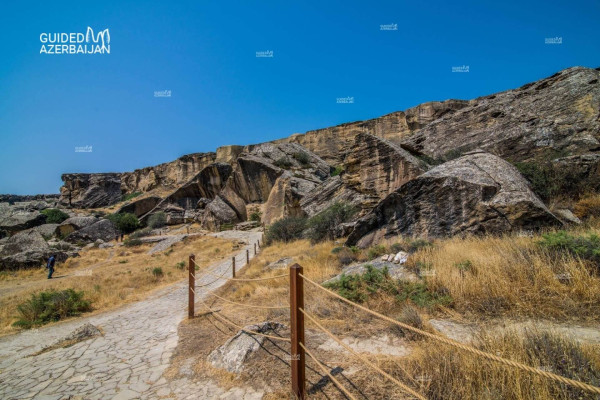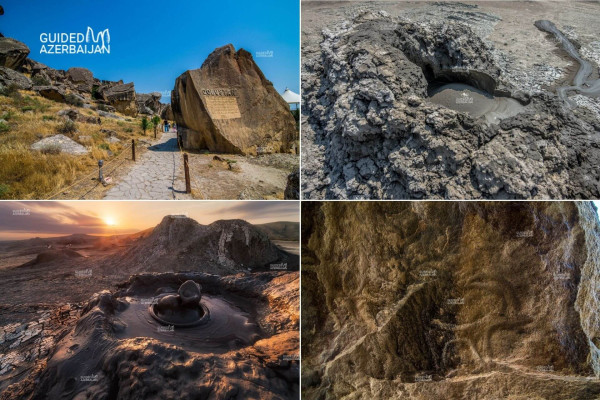Gobustan archaeological site
Gobustan Archaeological Site, located within Gobustan National Park in Azerbaijan, is an extraordinary destination renowned for its rich historical, cultural, and geological significance. The site is most famous for its Gobustan Petroglyphs and Mud Volcanoes, making it a must-visit for anyone interested in ancient history and unique natural features.
At the heart of the archaeological site are the Gobustan Petroglyphs, a collection of ancient rock carvings that date back as far as 5,000 to 40,000 years. These petroglyphs depict scenes of early human life, including hunting, rituals, and daily activities. The carvings showcase a variety of animals, such as wild goats, bulls, and horses, as well as human figures engaged in ceremonial practices. These petroglyphs are scattered across the rocky surfaces of the Gobustan hills, creating an open-air museum of prehistoric art. The Gobustan Petroglyphs are one of the largest and best-preserved collections of rock art in the world and were designated a UNESCO World Heritage site in 2007 for their exceptional historical value.
Another defining feature of the Gobustan Archaeological Site is the region's mud volcanoes, of which Azerbaijan is home to more than half of the world’s total. These active mud volcanoes expel mud, gas, and minerals, creating a dramatic and surreal landscape. The therapeutic properties of the mud have been known for centuries, and the volcanoes continue to draw interest for their unusual geological activity. The mud volcanoes are constantly changing, offering visitors a dynamic experience as they observe the bubbling mud and occasional gas emissions. The volcanic landscape adds a unique geological dimension to the archaeological significance of the region.
The Gobustan Rock Formations further enhance the site's natural beauty. These weathered, sculpted rocks have been shaped over thousands of years by wind and rain, creating striking natural features. The rock formations not only contribute to the park's picturesque landscape but also provide a stunning backdrop to the petroglyphs, making it a truly awe-inspiring site to explore.
For those wishing to understand more about the cultural and historical importance of the site, the Gobustan Museum offers informative exhibits about the petroglyphs, mud volcanoes, and archaeological discoveries in the area. The museum provides context and details about the region’s prehistoric inhabitants and the geological forces that shaped the landscape, offering visitors a deeper understanding of this remarkable site.
The Gobustan Archaeological Site provides invaluable insight into ancient human life, offering a rare glimpse of prehistoric cultures through its petroglyphs, rock formations, and geological features. It serves as a bridge between the ancient past and present, highlighting the deep connection between early humans and the environment they inhabited. With its remarkable combination of art, history, and geology, Gobustan is a vital part of Azerbaijan’s cultural heritage and is recognized globally for its importance.
In sum, Gobustan is a treasure trove of history and nature, combining ancient petroglyphs, unique geological features, and rich cultural significance, making it one of Azerbaijan’s most important and captivating destinations.







Please make sure your contact details, email, country code & number is correct